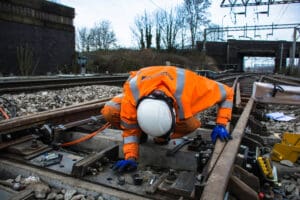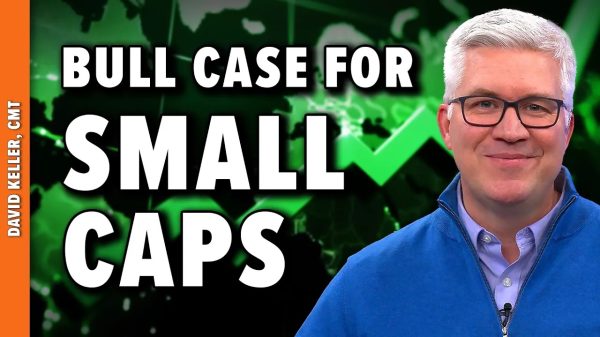State projects are funded by your money, either through taxation or by inflation, most times both. Money is either taken directly from you or you lose purchasing power. The result is the same, as you will lose the ability to buy or produce as much as you wanted because of these projects. However, this is the alleged cost of living in a “civilized society.” Without these projects, we would be driving on dirt roads, living in shacks, and working for pennies a day.
However, these projects usually make the country poorer. Henry Hazlitt, in Economics in One Lesson, noted the unseen aspect of public works, such as a bridge project, writing:
If the bridge costs $1,000,000 the taxpayers will lose $1,000,000. They will have that much taken away from them which they would otherwise have spent on the things they needed most.
Therefore for every public job created by the bridge project a private job has been destroyed somewhere else. . . . They are the jobs destroyed by the $1,000,000 taken from the taxpayers. . . . More bridge builders; fewer automobile workers, radio technicians, clothing workers, farmers.
The book also mentions how these projects many times don’t even need to be done; a bridge does not always have to be built. However, in the name of employment and elections, politicians will pour taxpayer money into worthless projects. There have been numerous failed projects undertaken by local, state, and federal governments, but three come to mind.
Connecticut’s Dunkin’ Donuts Park
The city of Hartford, Connecticut, looked in 2014 to build a stadium for their baseball team, the Yard Goats, set to be completed by April 2016 for $47 million. The city contracted Centerplan to build the park, but issues started very soon. As seen in the timeline of the park’s debacle, the budget increased to $56 million by the summer of 2015. By January 2016, the city and contractors had a falling out, with the contractors saying that the city demanded structural and design changes that weren’t possible with the given budget.
The project missed its deadline and was $10 million over the budget. Centerplan was replaced by Whiting-Turner, and the park finally opened on April 11, 2017, with a cost of $72 million. This was $72 million less in the hands of Connecticut taxpayers. Connecticut already has some of the highest income tax rates in the country, ranging from 3.00 percent to 6.99 percent. This project cost not only Hartford, but Connecticut as a whole.
New York City Subways
Towns and cities that hire private contractors for public works are more successful than state-run industries because these contractors still have to compete with other companies who want their state contracts. In New York City, however, the subways are owned and maintained by the state-owned industry, the Metropolitan Transportation Authority (MTA). The MTA employs seventy thousand people and provides an average salary of $72,029 a year for bus jobs and $86,000 for subway conductors. This doesn’t include union benefits provided to them. As the MTA cannot pay these salaries with fares alone, taxpayer money must be used.
The MTA, according to the Citizens Budget Commission, has recurring annual expenses of $2.5 billion more than it takes in. The MTA is a drain on the New York economy as it cannot even maintain its own trains and stations. The New York Daily News noted how NYC subways could fall into a “state of disrepair” if the construction program aimed at replacing old systems doesn’t catch up to deadlines.
Other problems faced include slower train cars, homeless encampments in tunnels, and violence in train cars. People often forget that the first subway stations were built and operated by private companies up until 1940, when New York City took over to keep fares below a dime. The current fare is $2.75.
California’s High-Speed Rail
Perhaps the most notorious public project in recent history has been California’s doomed high-speed rail project, which began in 2008 when voters passed Proposition 1A. This initiative approved the construction of a high-speed rail from Los Angeles to San Francisco, overseen and built by the California High-Speed Rail Authority, with an initial budget of $33 billion. By 2018, the budget had doubled to $64 billion. Fifteen years later, the project is still incomplete with a new cost of $100 billion. Baruch Feigenbaum of the Reason Foundation stated in an interview with Reason TV: “They’re using a blended track, so it won’t get to the speed they promised (220mph). Because it’s going through the central valley, it won’t meet the timetable that was laid out in the ballot initiative (2hr 40min).”
The California high-speed rail (if it is ever built) will not only be the slowest in the world, it will be the most expensive. As Quentin Kopp, the politician who initially pushed for the rail but is now fighting against it, said, “It will be conventional rail, which in a way is parallel to existing Amtrak service.”
Why Private Enterprise Does It Better
Proponents for public works programs point to the social benefits of projects like bridges, subways, or water system maintenance. They claim that because private businesses look for profit, they overcharge the poor, and the only way to stop this is to have a public system.
However, government funding is not free, and it is certainly not efficient. Public industries like the MTA lose money because they pay their workers above market level and have to rely on funding through taxation, since train and bus fares are not enough. Dan Biederman, the owner of Bryant Park in New York City, spoke to John Stossel on how government pays above-market prices but gets below-market service:
Government employees are so expensive that one of the reasons, for example, that in Manhattan, you don’t have litter picked up during the day, is it’s too expensive to do that with government employees. . . . Government guarantees that everything is gonna be too expensive for it, so when you hear the government doesn’t have any money anymore, it’s partly a self-imposed condition.
This happens under a monopoly, as the government is not concerned about competition. Taxpayers lose money while funding an inefficient system or project. Dunkin’ Donuts Park in Connecticut, for instance, was contracted out to a new private contractor after the first contractor failed. The MTA, on the other hand, has no direct competition.
Even for city services that many believe should be in government hands such as garbage, maintenance, and water, privatization has helped cities save money. Governing.com, in a 2010 article, reported how former Philadelphia mayor Ed Rendell saved the city $275 million by privatizing forty-nine city services.
In larger cases, such as bridges, the Library of Congress documented the Brooklyn Bridge throughout its construction. The bridge was a private venture designed by John Roebling and built and funded by the New York Bridge Company. It took fourteen years and would have a final cost of $15 million, or around $320 million in today’s money.
Private enterprise can build such a structure because of the price system, which allocates resources based on consumer demand. F.A. Hayek explained his understanding of this system in his essay “The Use of Knowledge in Society.” Libertarianism.org summarized: “In a market, many different people with only a limited scope of knowledge make independent decisions and plans. Prices serve as knowledge surrogates that allow different people’s understanding of the world to overlap enough to allow them to coordinate their plans with one another.”
Conclusion
In studying economics, one must understand that ideas and actions have consequences, not only the “seen” aspect of actions, but also the unseen. Is it worth it to build a rail from Los Angeles to San Francisco? Can it be profitable? Can buses with lower prices and freedom of movement be more effective?
The free-market process uses the price system and is the most effective way of building and allocating resources because it provides the best means of economic calculation. Public works like the California high-speed rail depend upon political allocations, which means they are simple wealth transfers that enrich a few at the expense of the many.























